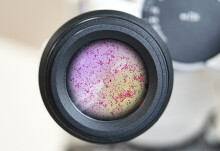

Researchers are developing wearable devices to transform the way we monitor, diagnose and treat acute and chronic conditions, including COVID-19.
Researchers at Imperial College London and the University of Freiburg have proposed that wearable devices could be used to develop a network of health data about a patient, allowing for early diagnosis of COVID-19, even when the patient is asymptomatic.
An increasing number of people are using wearable devices to better understand their health, also known as “quantified self-movement”. There are a variety of exciting new devices being developed, including tattoos, contact lenses, and clothing, which can monitor a range of different health signals and provide us with real-time data about our bodies. Now, researchers have suggested that this data could help to diagnose and treat COVID-19.
The article has been published in Nature Electronics.
Positive correlation
Smartphones, fitness trackers and smart watches have drastically changed the way we understand our personal health and fitness. These devices allow us to monitor our wellbeing through measurements of heart rate, movement, and even blood oxygen levels.
“The key advantage of wearables is that they are able to collect real-time information. This could transform the way we collect medical data by allowing measurements of trends and abrupt metabolic changes between check-ups." Dr Ali Yetisen Department of Chemical Engineering
Researchers from Imperial College London and the University of Freiburg have reviewed the literature on wearable devices and argue that their potential has become increasingly apparent during the COVID-19 pandemic.
They make the case that by building on previous research into wearable devices, these technologies could be used to detect even asymptomatic cases of COVID-19.
They note that previous studies in this field have shown promising data but were limited for several reasons. They were unable to distinguish between COVID-19 and other, similar viral infections, and the data was likely to show bias as smartwatches are generally more accessible to higher-income communities. There was also a need for large amounts of data in order to carry out accurate analysis, which would make diagnosis of novel pathogens difficult.
In their article, the researchers from Imperial College London and the University of Freiburg proposed that the use of wearable devices to detect COVID-19 could be significantly increased by employing a network of devices.
Smart network
"The use of intelligent facemasks could allow us to continuously access medically relevant physiological data in a non-invasive way." Dr Firat Güder Department of Bioengineering
There are a wide range of new low-cost wearables that measure various physical quantities currently in development. These include clothing that can detect when certain molecules or “biomarkers” are present in sweat; face masks that can analyse breath and detect airborne diseases; and contact lenses that can measure the pressure of fluid inside the eye.
Using several of these devices together would help to build a clearer picture of a patient’s health, without requiring large amounts of data.
Dr Ali Yetisen from the Department of Chemical Engineering at Imperial College London said: “By using a combination of different wearable devices, we could collect data on various patient signals, such as movement, respiratory rate or concentration of biomarkers in sweat. These could be used for pre-symptomatic and asymptomatic diagnosis, monitoring of the health of COVID-19 patients, or assessment of treatments.”
Intelligent face masks, in particular, would be very useful for detecting COVID-19. Face masks have already become a part of our everyday life, so it would not be challenging to encourage large numbers of people to wear them.
Dr Firat Güder from the Department of Bioengineering at Imperial College London said: “The use of intelligent facemasks could allow us to continuously access medically relevant physiological data in a non-invasive way. In the past, this data would have only been accessible if a patient was assessed at a clinic by healthcare professionals.”
The face masks could also monitor the air around the wearer, perhaps even alerting them to the presence of harmful airborne molecules. Spyras LTD, a start-up from the laboratory of Dr Güder, is already in the final phase of releasing their intelligent face mask for analysing respiration in real-time.
Wearables of the future
This research does not stop at COVID-19. In collaboration with researchers from University of California Davis, Dr Ali Yetisen’s research group have developed tattoos which change colour in the presence of certain biomarkers. These tattoos could keep a diabetic person informed about glucose levels in their blood or tell a person with a hormonal or metabolic disease if the pH of their body has changed.

This is just one example of an exciting new wearable device. There are a seemingly infinite number of uses for wearable technologies in medicine, which could really transform the way we assess and treat our health.
Dr Yetisen explained: “The key advantage of wearables is that they are able to collect real-time information. This could transform the way we collect medical data by allowing measurements of trends and abrupt metabolic changes between check-ups."
As these devices get smaller and cheaper, they will become more accessible to the average person. It may not be too long before we can all monitor every aspect of our health through our clothing, tattoos and face masks.
-
'Wearable devices for the detection of COVID-19' by Ates, H.C., Yetisen, A.K., Güder, F. et al., published 25 January 2021 in Nature Electronics.
Photo: Ketut Subiyanto from Pexels
Article text (excluding photos or graphics) © Imperial College London.
Photos and graphics subject to third party copyright used with permission or © Imperial College London.
Reporter
Lily Shepherd
Department of Chemical Engineering

Contact details
Email: press.office@imperial.ac.uk
Show all stories by this author



